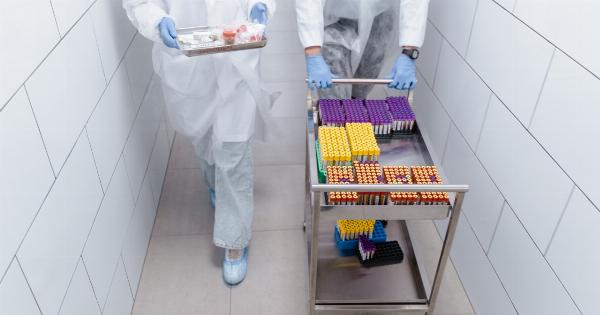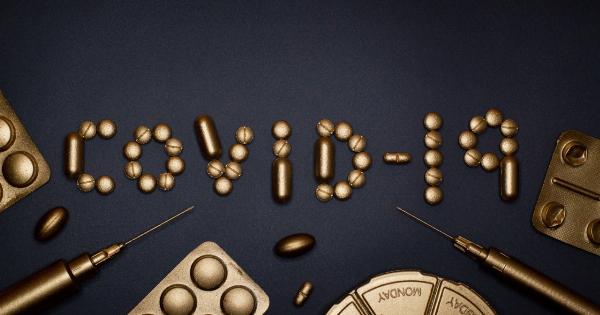Artificial blood has been a subject of extensive research and development for several decades.
Scientists and medical professionals have long sought to create a viable alternative to human blood, not only to combat blood shortages but also to address the need for tailor-made blood that can meet the specific requirements of diverse patients. In recent years, significant progress has been made in producing tailor-made artificial blood that holds great promise for enhancing patient care and saving lives.
The Need for Tailor-made Artificial Blood
Human blood consists of various components, including red blood cells, white blood cells, platelets, and plasma. Each of these components plays a crucial role in maintaining bodily functions and responding to illnesses or injuries.
However, not all patients require the same components in their blood transfusions.
For instance, patients with severe blood loss may primarily need red blood cells to restore oxygen-carrying capacity. On the other hand, individuals with clotting disorders might require additional platelets or plasma.
Existing blood banks struggle to meet the diverse needs of patients, often resulting in compromised care and inadequate treatment.
Creating tailor-made artificial blood offers a potentially revolutionary solution to this problem.
By understanding the specific requirements of each patient, medical professionals can develop blood substitutes that precisely match their needs, improving the success rates of transfusions and minimizing side effects.
Advancements in Artificial Blood Technology
Over the years, researchers have explored various approaches to develop artificial blood. Some initial attempts involved using perfluorocarbons (PFCs) to replace red blood cells temporarily.
PFCs have a high oxygen-carrying capacity and improved the oxygenation of tissues; however, their inability to deliver carbon dioxide led to their abandonment.
Scientists then turned their attention to hemoglobin-based oxygen carriers (HBOCs), which aimed to replicate the oxygen-carrying capabilities of red blood cells.
HBOCs are chemically modified versions of hemoglobin, the protein responsible for transporting oxygen in human blood. However, early versions faced challenges related to their short half-life, toxic side effects, and potential to cause vasoconstriction.
Despite these setbacks, significant progress has been made in recent years thanks to advancements in biotechnology and materials science.
Novel approaches have emerged, such as the development of synthetic oxygen carriers, blood substitutes derived from stem cells, and gene editing techniques to produce customized artificial blood products.
The Role of Stem Cells in Tailor-made Blood
Stem cell research has pioneered groundbreaking advancements across multiple fields, including regenerative medicine.
In the context of artificial blood, stem cells have shown immense potential in differentiating into various blood components, offering the prospect of creating tailor-made solutions.
Scientists have successfully induced pluripotent stem cells (iPSCs) to differentiate into red blood cells, white blood cells, and platelets.
This breakthrough allows researchers to cultivate these blood components in the laboratory, providing a sustainable and scalable source for the production of artificial blood.
By utilizing patient-specific iPSCs, medical professionals can create blood substitutes that match the individual’s unique genetic makeup, minimizing the risk of adverse reactions or transfusion complications.
Furthermore, stem cell-derived artificial blood could also be modified to enhance specific characteristics, such as increased oxygen-carrying capacity or improved clotting abilities.
Gene Editing for Customized Artificial Blood
The advent of gene editing technologies, such as CRISPR-Cas9, has revolutionized the field of biomedicine.
Gene editing offers the potential to precisely modify the genetic code of cells, including stem cells, enabling the production of tailor-made artificial blood.
Researchers can edit the genes responsible for producing specific blood components, optimizing their properties to suit individual patients.
For example, they can enhance the expression of genes involved in oxygen transport or modulate the genes responsible for clotting factors. These modifications can result in artificial blood products that are better suited to address the unique needs of patients, improving the overall efficacy of transfusions.
Challenges and Limitations
While the advancements in tailor-made artificial blood are impressive, several challenges and limitations still need to be overcome. One of the main hurdles is the scalability of production.
As the demand for artificial blood continues to rise, it is crucial to develop efficient and cost-effective methods for mass production.
Furthermore, extensive clinical trials and regulatory approvals are necessary before tailor-made artificial blood can be widely used in patient care.
Safety and efficacy must be rigorously evaluated to ensure that these artificial blood products outperform existing alternatives and do not pose additional risks to patients.
The Future of Artificial Blood
The development of tailor-made artificial blood has the potential to revolutionize patient care by providing personalized transfusion solutions.
With advancements in stem cell research and gene editing technologies, artificial blood substitutes could become an integral part of medical treatments in the near future.
By leveraging stem cells and gene editing, scientists can create artificial blood that closely mimics the properties of human blood, ensuring compatibility and reducing the risk of adverse reactions.
This customized approach has implications in various medical fields, including trauma care, transfusion medicine, and complex surgeries.
As research progresses and the necessary hurdles are overcome, tailor-made artificial blood holds the promise of addressing blood shortages, improving patient outcomes, and saving countless lives.































